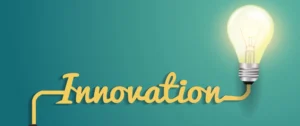-

If Quality Is Contextual, Then AI May Be Better Equipped Than We Think
As Director for Interpretation at the European Parliament, Alison Graves offers in this video thoughtful reflections on the evolving notion of quality in conference interpreting. In her presentation, focused on human interpretation, she moves away from rigid, perfectionist definitions and supposedly objective notions of quality, instead emphasizing the contextual, listener-centered…
-

Is AI interpreting ready for prime time?
Over the last few years, AI interpreting has made a leap, from flashy demos to real-world products. Machines can now translate speech between languages, sometimes with impressive accuracy. But interpreting isn’t just about getting the words right. It’s about context, nuance, stakes. And that’s where things get tricky. So, how…
-

Innovation, Not Automation, might be the Key to Shape the Future of the Language Industry
When we talk about the rise of AI in language services, the conversation too often gets stuck on automation. Most stakeholders, such as language service providers, scholars, and decision-makers, tend to view technology primarily as a tool to streamline existing tasks, making familiar processes faster, cheaper, or more efficient. But…
-

End-to-End Machine Interpreting: A Promising Frontier (That’s Not There Yet for Production)
The idea of a machine that listens to speech in one language and instantly speaks it back in another — all in real time, and without missing a beat — has long captured the imagination of researchers, technologists, and organizations working in multilingual communication. This is the vision behind end-to-end…
-

The Rise of AI and the Fall of the Gatekeeper
This article has been first published in Multilingual Magazine. For much of modern history, access to specialized knowledge has required one thing above all else: a professional. Whether it was legal advice, tax planning, language translation, or even medical consultation, the path to expertise ran through a narrow gate, guarded…
-

Speech Translation and the Illusion of Understanding
Not long from now, we may see simultaneous interpretation move beyond its traditional home, those glass-walled booths at international summits and corporate conferences. For decades, interpreters have worked behind the scenes, their voices flowing invisibly into headsets, turning one language into another with precision and care. It has always been…
-

Vibe Coding and the Language Industry: Letting Innovation Flow
In my career at the intersection of language and technology, I’ve often felt like an outsider in the world of code. I never formally studied informatics or learned programming the “proper” way. Instead, I stumbled into it out of necessity, curiosity, and often frustration that the tools I needed as…
-

Against Consensus: On the Need to Break our Echo Chambers
Recently, researchers at MIT conducted a striking experiment1. Participants were divided into three groups and asked to write a short composition. One group relied solely on their own cognitive resources. Another could consult the internet. The third turned to automated writing tools, including ChatGPT. Brain scans revealed a clear —…
-

AI-First Interpreting Approach: What it is and Why it Matters
The field of multilingual communication is undergoing a profound transformation. This transformation is rapidly ushering in an AI-first paradigm, a reality in which AI will be the default agent for translation and interpreting services. This shift is not distant or speculative; it is already underway, albeit still in the early…